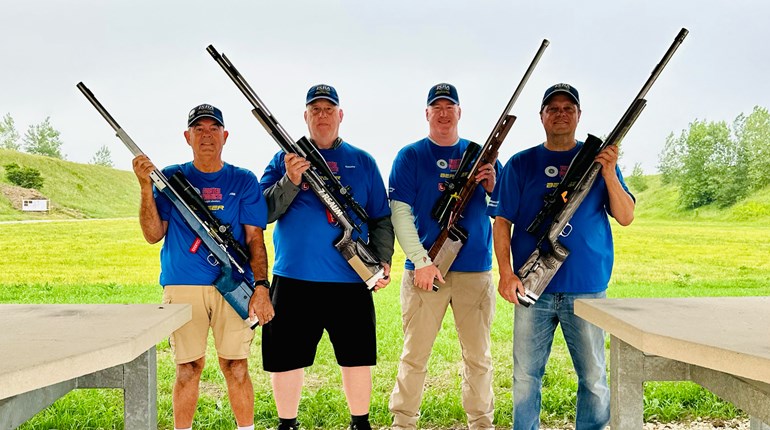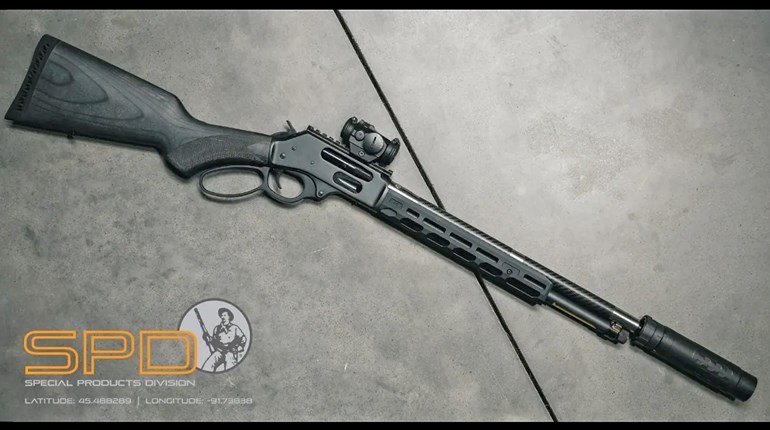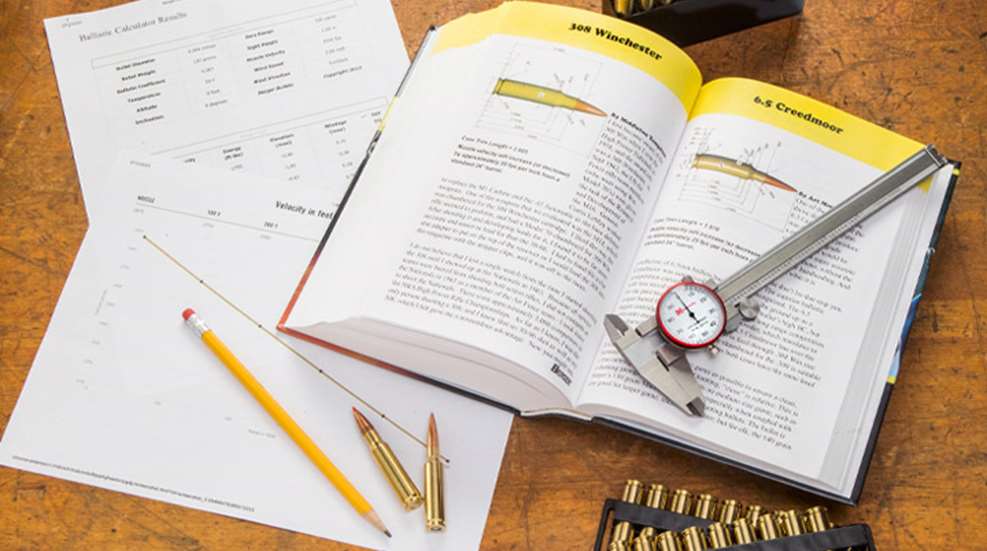
There is not one-does-it-all better High Power cartridge when all elements from accuracy, effiency to availability are considered. The best caliber for High Power competition may not be the best cartridge for anything else. Think about it—the most efficient hunting round would probably prove to be miserable on a 100-shot target shooting course.
Basically the “best caliber or round” may be good for everything, but not great for anything in particular. Not everyone can have a variety of firearms that they can use for competition, hunting, home defense and even national defense from enemies both foreign and domestic (the mission of the Second Amendment). This article deals with the best all-around cartridge for all these elements and still be reasonably effective.
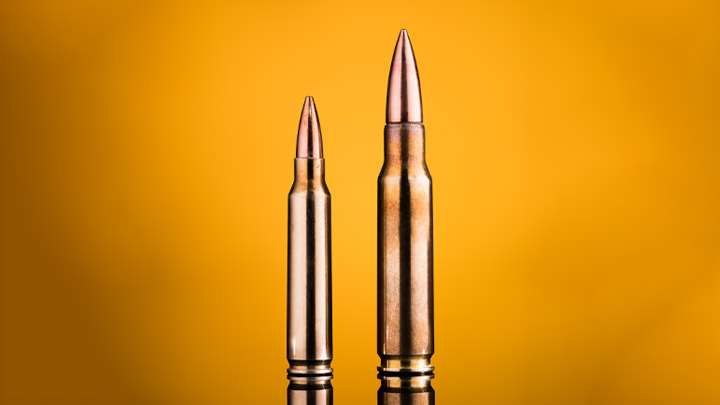
Benchrest
Many of us work hours on loading and experimenting with various cartridges and loads. Top Benchrest competitors are nearly fanatical about their cartridges, chambering, actions, triggers and barrels. Math and measurements for a Benchrest shooter can be so technical that an engineering professor’s eyes will glaze over with wonderment.
Weighing cases to ¼ grain and measuring each case to 1/10,000 of an inch is the kind of detail I cannot comprehend. Necks, shoulders and case dimensions are ultra-precise to ensure that cartridge-case internal capacity is identical and perfect. Being careful about case-neck dimensions ensures that bullet release is uniform.
Primer-pocket preparation for Benchrest is often so perfect that a Swiss watch builder would approve. Case-body capacity is measured by volume, weight and loaded to 1/20th of a grain. Once a bullet brand and type are chosen (unless the shooter makes his own) each is carefully inspected, then length, diameter checked and weighed out to a percentage of a grain.
Next is powder choice, with hundreds of precise test weighings for each powder to ensure correct case fill, burn rate, velocity at a particular temperature depending on a certain bullet weight, design, ballistic coefficient and the rifle. Then, the round is assembled with specialized ultra-precise (often custom made) dies on a dead-on reloading press ensuring uniform bullet pull when fired. All of this leads to incredible accuracy and phenomenal results like the recent 200-yard world record of putting five shots into an insanely tight 0.110-inch group.
In the late 1970s, Gary Anderson was watching a Benchrest match when a competitor asked the two-time Olympic gold medalist and holder of many international records, etc. if he had ever tried Benchrest competition. Saying he never tried it the gentleman offered up his .308 Win. rifle and ammunition to give Anderson a shot at this sport. So, Anderson gave it a try as a first timer with a borrowed rifle and ammunition. He immediately set a new national record. Great shooters are simply great shooters—especially when they can read conditions and pull a trigger correctly.
F-Class
Similar to Benchrest shooters and their attention to detail comes F-Class shooting, which is pretty much Benchrest on steroids due to the much longer ranges, typically 1,000 yards. These precision rifles must shoot incredibly accurately to be competitive. This fun and exciting sport is for those who want to compete at 1,000 yards without having to get geared up like the Wimbledon-type shooters with heavy jackets, sweatshirts and the like; along with the learning curve on how to shoot while wearing all that gear.
F-Class competitors can shoot regular hunting rifles if they wish, though the winners will probably have better (more expensive) gear. The more efficient cartridges for F-Class have proven to be 6mm, 6.5mm and some 7mm chambered bullets.
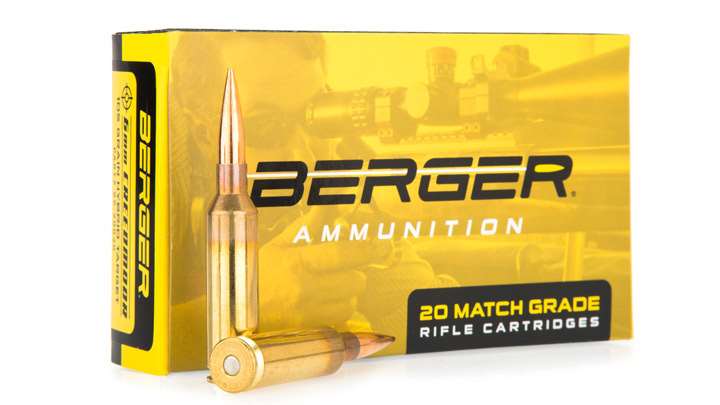
The more popular and favorite calibers are 6 BR, 6x47 Lapua, 6mm and 6.5mm Creedmoors, the 6mm Dasher or similar variants. They are typically based on the .308 Win. cartridge case whittled shorter and necked down with trick-shoulder angles. When charged with efficient case-filling powders they launch pencil-long high-BC 6mm, 6.5mm and 7mm bullets at 2,800 to 3,200 fps velocity with incredible accuracy. These calibers also make decent medium game rounds, but many fall short due to availability for those wanting factory fodder.
F-Class is the Ferrari of shooting when it comes to the cost of gear. Good F-Class rifles topped with high-dollar optics and serious rifle rests can easily run several thousands of dollars. This sport is growing fast for those who like wailing away at a target 1,000 yards away with 20 rounds trying to stay in a 5-inch X-ring. Fun is what F-Class is all about—a sport where 7mm, 6.5mm and 6mm super-BC wildcats and some old-timey calibers begin to truly shine. The good news is you can try F-Class out with your basic sporting or target rifle to see if the fun factor is there for you.
Silhouette
In the late 1970s, metallic silhouette competition exploded. It was by far the fastest growing NRA competition. Over the last 20 years, rule changes and the inevitable equipment race to buy points through expensive equipment greatly diminished this once-far-more-popular sport. Silhouette started off as a simple purist game, shooting at metal animals at 200 meters to 500 meters (547 yards). A winner needed a rifle and ammo that grouped ½ to ¾ MOA at 200 meters and the ability to break a shot when on, or moving to the next target.
In the 1980s when I competed, my ammunition was based on neck turned and trimmed, primer-pocket squared nickel-plated Federal .308 cases, Dupont 4895 Powder, Federal Match primers and Sierra 168-grain match bullets. For Rams, I chose 180-grain Sierras. But later in the decade I noticed many shooters were switching to the 7mm-08 Rem. because it shot as well as the .308 Win.
Famed silhouette shooter Conard Bernhardt shared his 7mm-08 Rem. load with me at the time of 4350 powder, match primers and Sierra’s 175-grain SBT hunting bullet for Rams and Sierra’s 140-grain hunting bullets for 200 to 385 meters and it worked phenomenally well. Using the same rifle, I dropped an elk at 375 yards, falling so quick it looked like it was hammered by a cannon round.
Since all shooting was off-hand standing, anticipating the recoil could be a factor. A recoil-shy friend, Neal Rice, shot a Remington 7mm BR round in his rifle. Using bullets nearly as long as the cartridge case they were launched at about 2,200 fps. You could almost time them with a stopwatch on the way to the 500-meter target. They were low recoil and accurate, but with a mortar round-like trajectory and once in a while the 500-meter, 54-pound steel ram would not be impressed and not fall over when hit which is required to score.
High Power
The .30-’06 was the premier U.S. military round right up to 1960, when the military adopted the 7.62x51mm NATO round (close cousin to .308 Win.). Fired in combat the world over, used in all types of high-powered rifle matches the .30-’06 did it all—and it’s still a popular hunting caliber today.
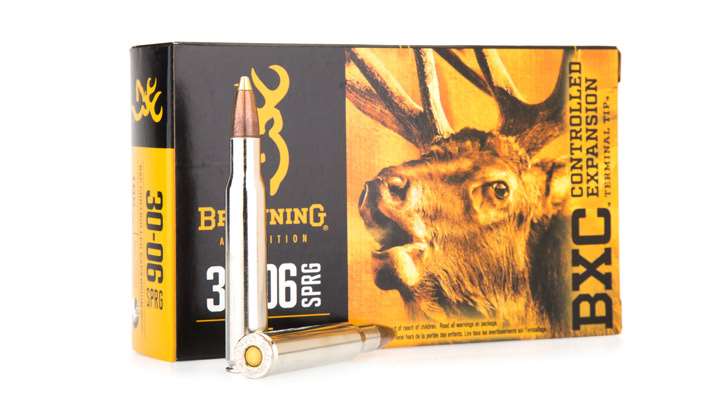
But due to NATO concerns over fear of another war in Europe, thanks to our Russian “friends” things had to be made more combat compatible between NATO nations. Thus, faster and higher-capacity individual troop rifles were needed. Different calibers were tried by the U.S. and its NATO partners, but at that time the best was 7.62x51mm NATO.
The 7.62x51mm round, when adopted by the U.S. from the earlier French FAL, met NATO requirements for compatibility in the event of a major war. Like today’s love affair with the “new” 6.5s, back then the .308 Win. became the darling for gun writers and shooters at the time. Gun owners could not read enough about it. Generally, all the rifles for commercial use in the U.S. including clones are chambered for .308 Win. and will handle 7.62mm ammo and vice-versa. I never had a problem crossing each into any like-chambered, good-quality rifle.
The new .308 Win. set High Power Rifle competition records of all kinds the world over. It also proved a very effective hunting round even at a tiny 80 to 150 fps slower than the harder kicking and slightly less accurate (due to cartridge case volume) .30-’06. The 7.62x51mm became the new go-to round for the M14 battle rifle, the beloved M-60 light machine gun and now in the M-240 LMG.
In big team military matches, the 7.62 NATO M14 saw great use for the National Match Course, as well as out to 1,000 yards with iron sights. Now rare, original National Match military rifles used an epoxy impregnated straight grain wood stock with glass bedding, gas-gauged match barrels, locked-up gas system, reamed flash suppressor, locked-in-place op rod guide loop, tweaked upper handguard, heaver spring guide, tuned 4½-pound trigger and special front and rear sights. These semi-automatic rifles shot great and had to keep 10 rounds in 4½-inch groups at 300 yards using Lake City Match ammunition and open sights. Some were scoped and used as sniper rifles in Vietnam, and even today the military uses them with scoped-up designated marksman rifles. During Vietnam, M14 National Match rifles proved very deadly when fitted with a Leatherwood sniper scope.
The match M14 was generally used with M118 Lake City National Match ammunition which used high-quality boxer primed cases, Dupont 4895 powder and a non-crimped 172-grain boattail match-grade bullet held in the case by neck fit friction and a tar seal. This no-crimp design allowed the bullet to pull from the case more uniformly and more accurately than if crimped like the 147-grain combat bullet. Tar also provided an effective moisture barrier for combat operations, and like combat ammunition the primer was lacquer-sealed.
Early on, the .308 Win. quickly found popularity with bolt-gun competitors in several sports over the .30-’06 due to reduced recoil, lower recoil recovery time, improved accuracy, and in some sports its shorter, faster bolt throw which also made it a natural for hunting. Then came the civilian version of the M14, when the Springfield Armory M14 clone (M1A) arrived in the 1970s. For the next 20-plus years the semi-automatic rifle civilian, competitive shooting and hunting markets were dominated by the .308 Win. round. It’s still an excellent caliber.
From 1978 to 1981, I would shoot the National Match Course. At times, some M118 National match (and sniper) ammo could be located in the civilian market. Those of us using the M1A were after all the Lake City M118 match ammunition we could get our greedy little hands on—this stuff shot really well.
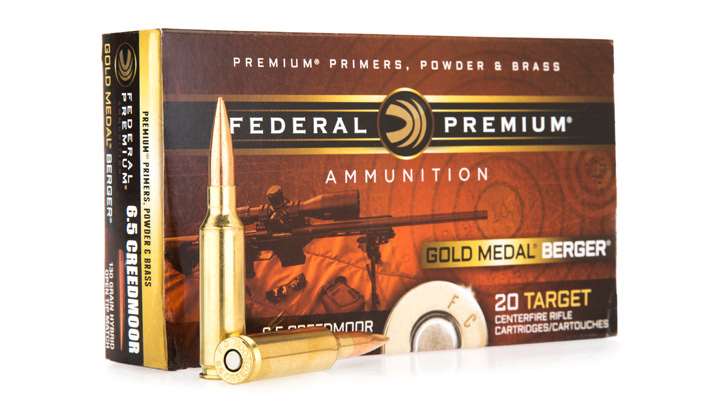
We would take M118 match rounds and seat the bullet a tiny fraction of an inch deeper—just enough to crack the dry tar seal and release tension (you can hear it pop). This made the bullet neck pull tension more uniform from round to round, improving the accuracy 15 to 20 percent. Going a step further was to simply pull the 172-grain NM bullet and replace it with a Sierra 168-grain MatchKing. This resulted in a 30 percent improvement in accuracy over original issue M118 ammo. This proved correct out to 1,000 yards with Service Rifle competitors. The generic slang name for these converted M118 rounds was “Mexican Match” and it was legit in matches (except DCM leg ones). Mexican Match ammo is no doubt the father of the current 7.62x51mm NATO sniper ammunition and other variants. Also worth considering is that at 500 yards, a .308 Win. round hits with the same velocity and energy as a .44 Mag. round does at one inch.
The .300 Win. Mag. with anything from the “light” 180-grain bullet up to a 220-grain match bullet proved superior at 1,000-yard matches (a 250-grain match bullet came along later). The .300 Win. Mag.’s higher-velocity bullet shot flatter, deflected wind better and had a superior BC compared to .308 Win. and .30-’06. The effectiveness of the .300 Win. Mag. in 1,000-yard matches in the late 1970s prompted the military to seriously examine the data gained at Camp Perry and implement the .300 Win. Mag. as a sniper rifle. For hunting anything in North America it’s incredibly effective; though for many the cost, noise, longer bolt throw and “fun recoil” may be a drawback.
In the 1980s, I was the editor–in-chief of a magazine and received many opportunities to shoot experimental guns. In 1982, a portrait photographer from Tennessee brought his ginned up .50 cal. semi-automatic made out of surplus Browning parts and some goodies of his own design to try out. We only had access at the time to a close by 200-yard range and he only had .50 cal. ball ammo. The creation shot decently at that time with groups around 3 to 4 inches and it was fun to shoot. In my opinion, it had real military application. By the way, the photographer’s name was Ronnie Barrett. Maybe you’ve heard of him. Of course, the .50 Browning round is well-represented in combat history and this is just one more operational element for this effective cartridge. Nowadays, for civilian precision shooting some really good match bullets are made for it. And, the big and awesome .50 cal. is used by the Fifty-Caliber Shooting Association for their various fun-filled competitions held around the country. You can still find surplus ball ammunition for about $3 a round. However, the .50 cal. has some “minor” weight, recoil and noise drawbacks if used in rifles that one can pack around.
A friend, Jerry Haskins who coincidentally once lived in Rifle, CO, moved to Rogers, AR, in 1983 and called me to see if I would like to test out his new RAP special operation (Delta Force/Special Forces) target interdiction .50 and his .338-.416 Rigby Magnum chambered rifles. I quickly said yes and his assistant, along with a batch of .338-.416 Rigby Magnum and .50-cal. Swedish Raufous ammunition showed up in Colorado. We took them to a 600-yard range east of Denver.
These stunningly beautiful, ultra-futuristic looking rifles were decades ahead of their time in design. The .50-cal. I fired was a single-shot short-bolt rifle designed for “lightweight” transport and airborne operations for Special Forces. The idea: covertly parachute behind enemy lines and kill enemy radar sites, missile support gear or the missile itself—hence the name “target interdiction rifle.” Back then, the special .50s were not intended for shooting personnel, just equipment. This was long before hand-held laser guidance, and it was more quietly innocent to operate than a 750-pound laser-guided bomb, especially in certain types of covert operations. Weighing in at about 13 pounds (sans scope), the Haskins gun was lightweight and yes, it smarted a bit when fired—but in all the excitement you would barely feel it bump you.
When Haskins’ assistant produced some new Swedish Raufous rounds, I let one loose at a 5-inch thick steel plate at 600 yards, and it lit up with a bright white light from the incendiary tip, along with a loud pop from the PETN explosive and heat from the zirconium powder contained in the bullet. All confirmed the bullet hit to the shooter in reduced light conditions and also caused further incendiary and particulate damage to internal equipment when hit. The round’s .30-cal. tungsten penetrator then punched a hole through the thick steel so clean it looked as if it had been precision drilled. This particular U.S. load with its light green and white stripe .50-cal. Browning round (12.7mm) is now made under license in Sweden for our military and is rumored to cause about the same damage as a conventional 20mm round—I can vouch for that.
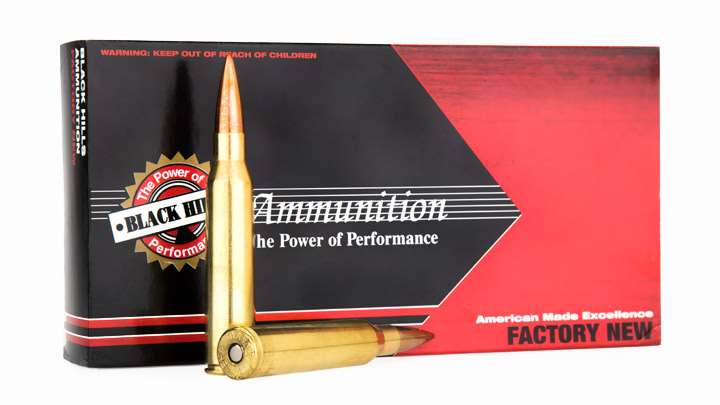
Now about that .338 Lapua Magnum thingy many are now in love with—until they shoot it. Back in the day, Haskins took a Bell brand .416 Rigby Mag. case, necked it down to .338 and created a rifle round that would toss a 250-grain .338-cal. bullet at about 3,000 fps. Recoil from one of these beautiful 10-pound rifles wacked a bit quicker than his .50, but what fun. A dozen of these .338-416 chambered futuristic looking rifles were quietly housed in a 7th Special Forces armory at Fort Bragg for Delta use. For a few weeks, two of them and one of the .50s were at my house with plenty of ammunition to play with.
That particular Jerry Haskins wildcat would become the .338 Lapua Mag. This round is used in extreme long-range competition. It’s a serious long-range sniper round that supersedes the .300 Win. Mag. in velocity, drift, trajectory, etc.; and it’s used in some competitions by those who can take the thumping.
As a hunting round the .338 Lapua Mag. round is tops for dangerous game (think bear and African hunting) though some that like to “over gun” use it on elk and moose. The expense of rifles and ammunition, the heavy recoil, noise and ammunition available all say this is not a casual “fun gun” round for the average shooter or his or her wallet.
In the 1970s, the civilian cousin of .223 Rem., the 5.56x47mm NATO was worming its way quickly into military competition “rattle battle” matches. Now the black gun (both AR-15 and military model) is used for the National Match course to good effect—especially when a military-issued 4.5x telescopic sight (rule change about three years ago) is used.
The 5.56x45mm NATO round is a marginally powerful military round originally intended for issue to Air Force base guards and military police in the 1960s due to its ease of training and light weight. All of that was dandy until Secretary of Defense Robert McNamara ordered it be used for conventional combat warfare in all services. His reasoning was that it was easier to handle and train with over the heavier and harder-hitting M14; both the M16 and its ammunition were much lighter than the more powerful battle rifle in the jungles of Vietnam.
It may come as a shock to learn that 5.56 NATO (like its civilian cousin .223 Rem.) is NOT legal for big-game hunting in various states, as it’s judged not powerful enough for big game like deer or elk. For comparison purposes, the humble .30-30 Win., the same one snickered at in today’s magnum-manic world, is still both very legal and lethal; and will hit with the same velocity and energy at 275 yards as the .44 Mag. at one inch.
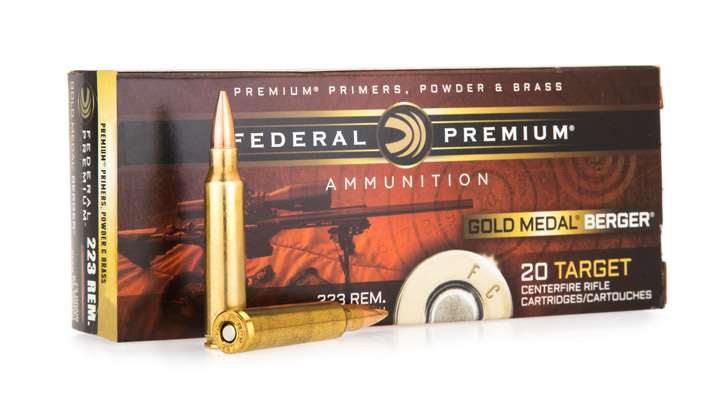
However, the 5.56mm is legal for rabbits and coyotes in these restricted states, but so is a .22 rimfire. The 5.56mm NATO and .223 Rem. are slightly different due to a technical pressure change and minor dimensional changes, but shooters across the country ignore this and safely shoot them interchangeably. As for availability, it can be found most anywhere, including a boatload of surplus, overrun or military contract failed ammunition (cosmetic quality).
The current caliber rage and race, whether hunting or competition, are the various 6.5mm calibers such as the 6.5 Creedmoor (invented by Hornady in 2007) and 6.5 Grendel, etc. These “new” 6.5mms are basically a .308 necked down to 6.5mm. The popular originator of the 6.5mm caliber is the 6.5x55 Swede round. The 6.5x55mm Swede is a near .30-’06 sized case with a 6.5mm bullet in it. Used in both World Wars by the Swedes and others in that area of the world, it proved very lethal as many invading Germans and Russians discovered during WWII. Low in recoil, it launches a scary accurate 140-grain bullet at about 2,600 fps.
This light and inherently accurate bullet hits like a ton of bricks on flesh. I watched Swedes blast moose (they call them elk) with the 6.5x55, it was stunning how quickly the animal went down—faster than my .300 Win. Mag. put them down. I can see why folks like the 6.5x55 Swede’s cousin the .260 Rem.
It’s understandable why so many shooters are now using 6mms in competitions of all types. With the outstanding ballistics of the 6mm family of bullets when launched above 2,550 fps gun writers cannot wait for the next new 6.5 rifle, chambering or ammunition to come out. And in some cartridges, the 6.5 delivers the same trajectory ballistics at longer ranges as the .300 Win. Mag.
Conclusion
I believe that when it comes down to just one single cartridge for competition, hunting, availability, national defense and general-purpose use the .308 Win. (7.62x51mm NATO) round covers all of these bases the best. Here’s why.
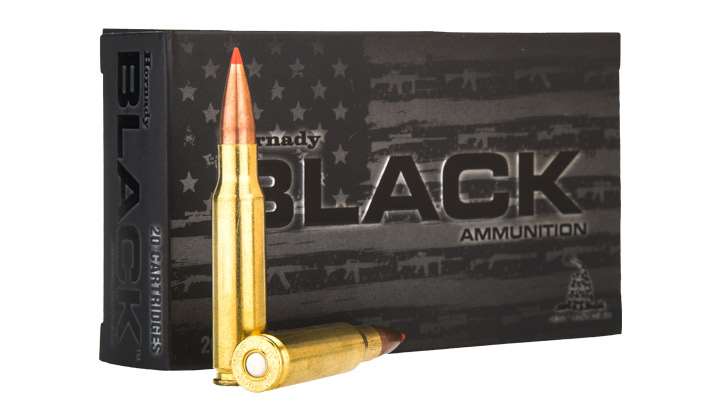
Competitive Shooting
The .308 Win. will generally outshoot the shooter in most any competition. It has been proven in many different types of competitions over the last 50 years; from the National Match Course, 300-meter International matches, Palma, 1,000-yard matches, Benchrest, Silhouette—you name it. And with today’s modern bullets and powders it still can perform at the highest levels if desired by shooters and handloaders.
Hunting
For hunting in North America, using the .308 Win. is a no-brainer because it just works. Good shooters can make first round, instant-kill hits at ranges over 500 yards at a trophy elk. The .308 Win. kills quickly, as with most any other caliber, if the shooter does their job—remember that comparison about the .308 Win. and .44 Mag. 500-yard power. Obviously, there are bigger and flatter shooting cartridges such as the .300 Win. Mag., .338 Win. or the cement truck killing .338 Lapua Mag., and for dangerous game .375 Win. and .416 Rigby. Of course, we are talking about everyday use, availability and cost per round.
The cost for many exotic rounds like .338 Lapua is way up there. Many hunters who do not reload may not practice with ammunition that costs around $100 a box of 20 and the recoil and noise from all of these on the game hunt is a joy to behold—especially if you are using a recoil-reducing muzzle brake.
Internal Defense and Military
Internal national defense, the heart of the Second Amendment, is a concern for many. The .308 Win. (7.62x41mm NATO) still is the top military sniper round—and a proven, highly effective competition caliber, especially with the wide variety of bullets developed over the last 25 years. Additionally, the .308 Win. is an effective self-defense round—enemy troops that take one hit anywhere are down for the count.
Availability
Look at most gun shops or firearm-stocking sporting-goods stores and you will find more .308 Win. variants than any other high-power rifle caliber. The 5.56 NATO/.223 Rem. may come in second for availability. As with the 5.56 NATO/.223 Rem. round you can easily get 7.62mm NATO/.308 Win. military surplus or military new overrun ammunition for the defensive or fun dirt-killing angle. And of course, .308 Win. hunting ammo is available everywhere and the price is reasonable compared to .30-’06, .300 Win. Mag., monster calibers, the 6mms, 6.5s and exotics.
Reloading components for the .308 Win. are the same as for the .30-’06 and also for .300 Win. Mag.—thus offering a truly huge selection of bullet, primer and powder choices for everything from plinking, competitive shooting, hunting and national defense.
All photos by Peter Fountain.
Ammunition featured in this article:
- Federal Gold Medal Berger 6.5mm Creedmoor. FederalPremium.com
- Browning BXC Big Game .30-’06. Browning.com
- Berger Match-Grade 6mm Creedmoor. BergerBullets.com
- Black Hills Ammunition .338 Lapua Mag. Black-Hills.com
- Hornady Black .308 Win. Hornady.com
- Federal Gold Medal Berger .223 Rem. FederalPremium.com
See more:
- AR-15 Architecture: The Key To Function
- Electronics for Match Preparation and Load Development
- Precision Rifle Champions Switch To New Bullet In Mid-Season—And Win
- How To Calculate Rifling Twist Rates For Stabilizing Bullets
- A Swiss Schuetzenfest: The World’s Largest Rifle Match
- Barrel Break-In: How To Do It Right
- G1 vs. G7 Ballistic Coefficients













